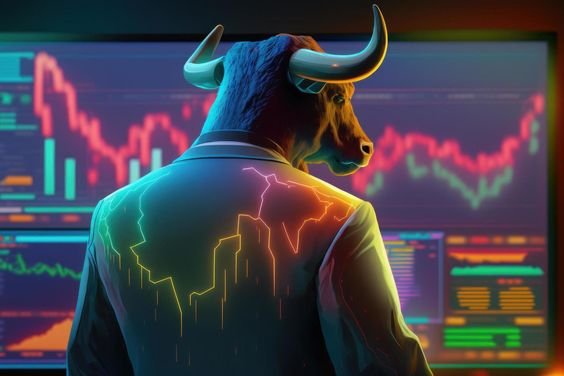The Union Budget 2024, presented by Finance Minister Nirmala Sitharaman, has generated significant discontent among Indian stock market traders, particularly due to the increase in the securities transaction tax (STT) on futures and options (F&O). This article explores the reasons behind the traders’ dissatisfaction, the broader context of derivative trading in India, and the implications of the STT hike on market participation and investor sentiment.
Background on Securities Transaction Tax (STT)
The Securities Transaction Tax (STT) is a levy on the transaction of securities, including shares, debentures, bonds, and derivatives. Introduced in 2004, STT aims to curb speculative trading and ensure that a portion of trading profits is taxed at the source. Over the years, STT rates have been periodically revised to balance the government’s revenue needs with the market’s growth and stability.
In the Union Budget 2024, Finance Minister Nirmala Sitharaman announced an increase in STT on the sale of options and futures in securities:
Options: STT on the sale of an option in securities was raised from 0.0625% to 0.1% of the option premium.
Futures: STT on the sale of a futures contract in securities was increased from 0.0125% to 0.02% of the traded price.
The Indian Derivatives Market
Growth and Popularity
The derivatives market in India has witnessed exponential growth, particularly post-COVID-19 pandemic. Retail investors, in search of quick profits, have increasingly turned to derivative trading, viewing it as a lucrative avenue for generating returns on their capital. This surge in participation has propelled India’s equity derivatives volumes to the highest in the world. As of March 2024, the monthly turnover in the F&O segment reached a staggering ₹8,740 lakh crore, up from ₹217 lakh crore in March 2019.
Key Statistics
- Monthly Turnover (March 2024): ₹8,740 lakh crore
- Average Daily Turnover in Equity Cash Segment: ₹1 lakh crore
- Average Daily Turnover in F&O Segment: ₹330 lakh crore
- Retail Investor Participation
Retail participation in the F&O segment has been particularly notable. Despite the inherent risks and complexities of derivative trading, a significant number of retail investors have flocked to this segment. This trend has been driven by the potential for outsized gains, catering to the gambling instincts of investors seeking high returns. However, it has also resulted in substantial losses for many, highlighting the need for better investor education and financial literacy.
Reasons for Trader Discontent
Increased Cost of Trading
The hike in STT directly increases the cost of trading for market participants. For traders engaged in high-frequency trading and those with large volumes, the incremental increase in transaction costs can significantly impact profitability. This is particularly burdensome for retail traders, who already operate on thin margins and are more sensitive to changes in transaction costs.
Reduced Market Liquidity
Higher transaction costs can deter trading activity, leading to reduced market liquidity. Liquidity is crucial for the efficient functioning of markets, as it ensures that traders can enter and exit positions with minimal price impact. Reduced liquidity can result in wider bid-ask spreads and increased market volatility, making it more challenging for traders to execute their strategies effectively.
Impact on Retail Investors
Retail investors, who have been the primary drivers of the surge in derivative trading volumes, are likely to be the most affected by the STT hike. Many retail investors participate in the F&O segment without a thorough understanding of the risks involved. The increased transaction costs could exacerbate their losses and potentially drive them away from the market. This scenario is particularly concerning given the warnings from the Securities and Exchange Board of India (SEBI) that 90% of active retail traders lose money in derivative contracts.
Concerns of Overregulation
There is a growing sentiment among traders that the government is overregulating the market. While the intention behind the STT hike is to curb speculative trading and ensure market stability, traders argue that it may stifle market activity and innovation. They believe that the focus should be on enhancing investor education and promoting responsible trading practices rather than imposing additional costs on transactions.
Government Perspective and Rationale
Revenue Generation
One of the primary motivations behind the STT hike is to generate additional revenue for the government. With the burgeoning volume of transactions in the derivatives market, the increase in STT is expected to contribute significantly to the exchequer. This revenue can be utilized for various developmental and welfare initiatives, addressing the broader economic needs of the country.
Market Stability
The government and regulatory authorities, including SEBI, have expressed concerns about the growing retail participation in the derivatives market. The potential for significant losses among retail investors and the resultant financial instability are key issues. By increasing STT, the government aims to discourage excessive speculative trading and promote market stability.
Encouraging Long-term Investments
Another rationale behind the STT hike is to encourage long-term investments over short-term speculative trading. By making derivative trading more expensive, the government hopes to shift investor focus towards long-term investment in equities and other financial instruments. This shift is seen as beneficial for the overall health of the capital markets and the economy.
Implications and Future Outlook
Short-term Impact on Market Sentiment
In the short term, the STT hike is likely to have a negative impact on market sentiment. Traders and investors may react by reducing their trading activity, leading to lower trading volumes and liquidity. This reaction could result in increased market volatility and uncertainty.
Long-term Market Dynamics
In the long term, the impact of the STT hike will depend on how market participants adapt to the new cost structure. If traders find ways to optimize their strategies and manage costs effectively, the market may stabilize. However, if the increased transaction costs continue to deter trading activity, it could have a lasting impact on market liquidity and efficiency.
Need for Enhanced Investor Education
The Economic Survey 2024 emphasized the need for increased investor education and ongoing financial literacy efforts. To mitigate the risks associated with derivative trading, it is crucial to equip retail investors with the knowledge and tools to make informed decisions. This approach can help reduce the likelihood of significant losses and promote responsible trading practices.
Potential for Policy Revisions
Given the strong reaction from market participants, there is a possibility that the government may consider revisiting the STT rates in the future. Continuous engagement with industry stakeholders and a review of the impact on market dynamics could lead to policy adjustments aimed at balancing revenue generation with market growth and stability.
The increase in securities transaction tax (STT) on futures and options announced in the Union Budget 2024 has sparked significant discontent among Indian stock market traders. The hike is seen as a move that increases the cost of trading, reduces market liquidity, and disproportionately impacts retail investors. While the government’s intentions include generating revenue, promoting market stability, and encouraging long-term investments, the immediate reaction from traders has been largely negative.
To address these concerns, there is a pressing need for enhanced investor education and financial literacy initiatives. Equipping retail investors with a better understanding of derivative trading and its associated risks can help mitigate losses and promote responsible trading practices. Additionally, continuous dialogue between the government, regulatory authorities, and market participants is essential to ensure that the regulatory framework supports market growth and stability while safeguarding investor interests.
As the Indian stock market navigates these changes, the future outlook will depend on how effectively stakeholders adapt to the new cost structure and the ongoing efforts to promote a healthy and vibrant trading environment. The coming months will be critical in shaping the trajectory of the Indian derivatives market and the broader capital markets.
ALSO READ: Top 3 Stocks With a Breakout Potential: PB Fintech, SunTV, Sona BLW




